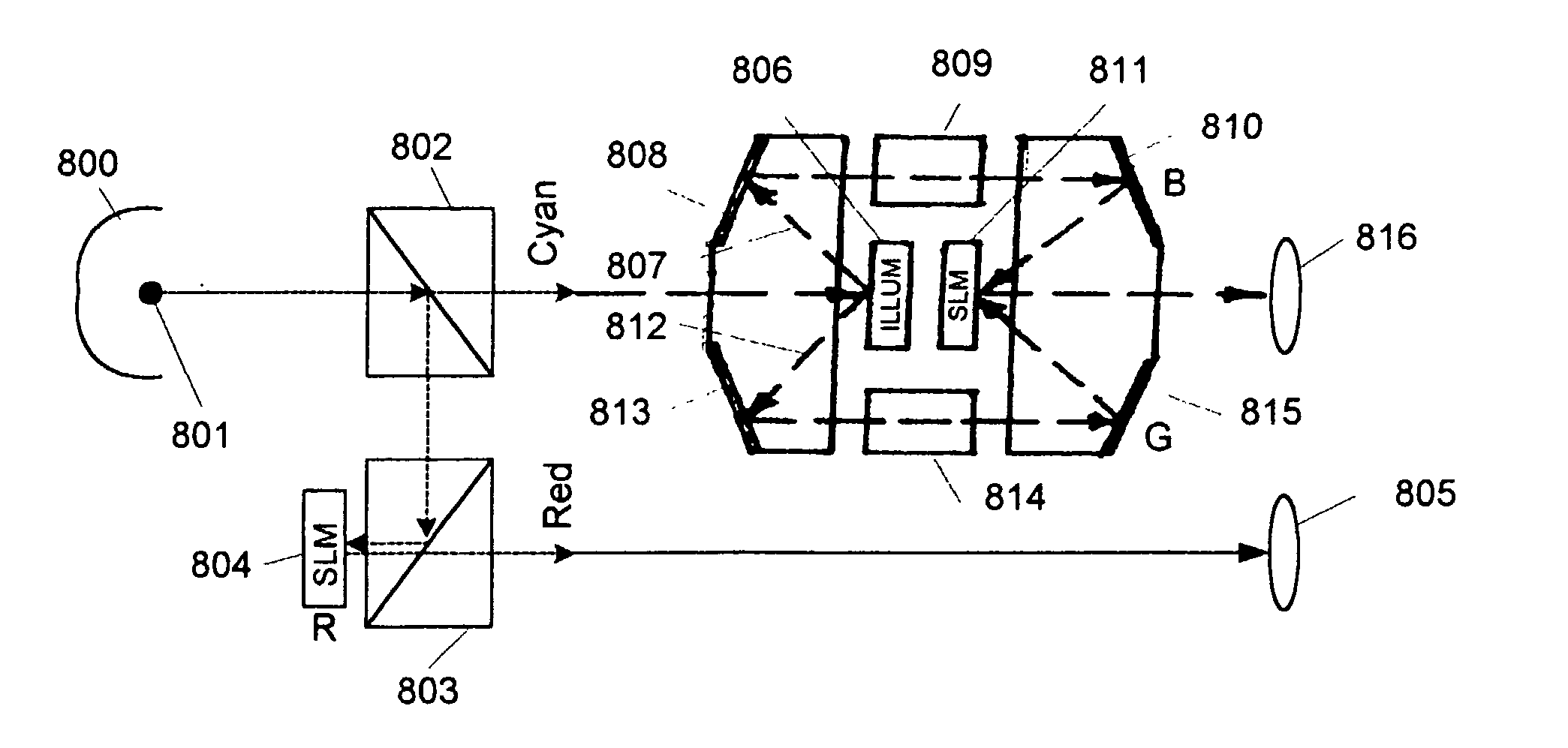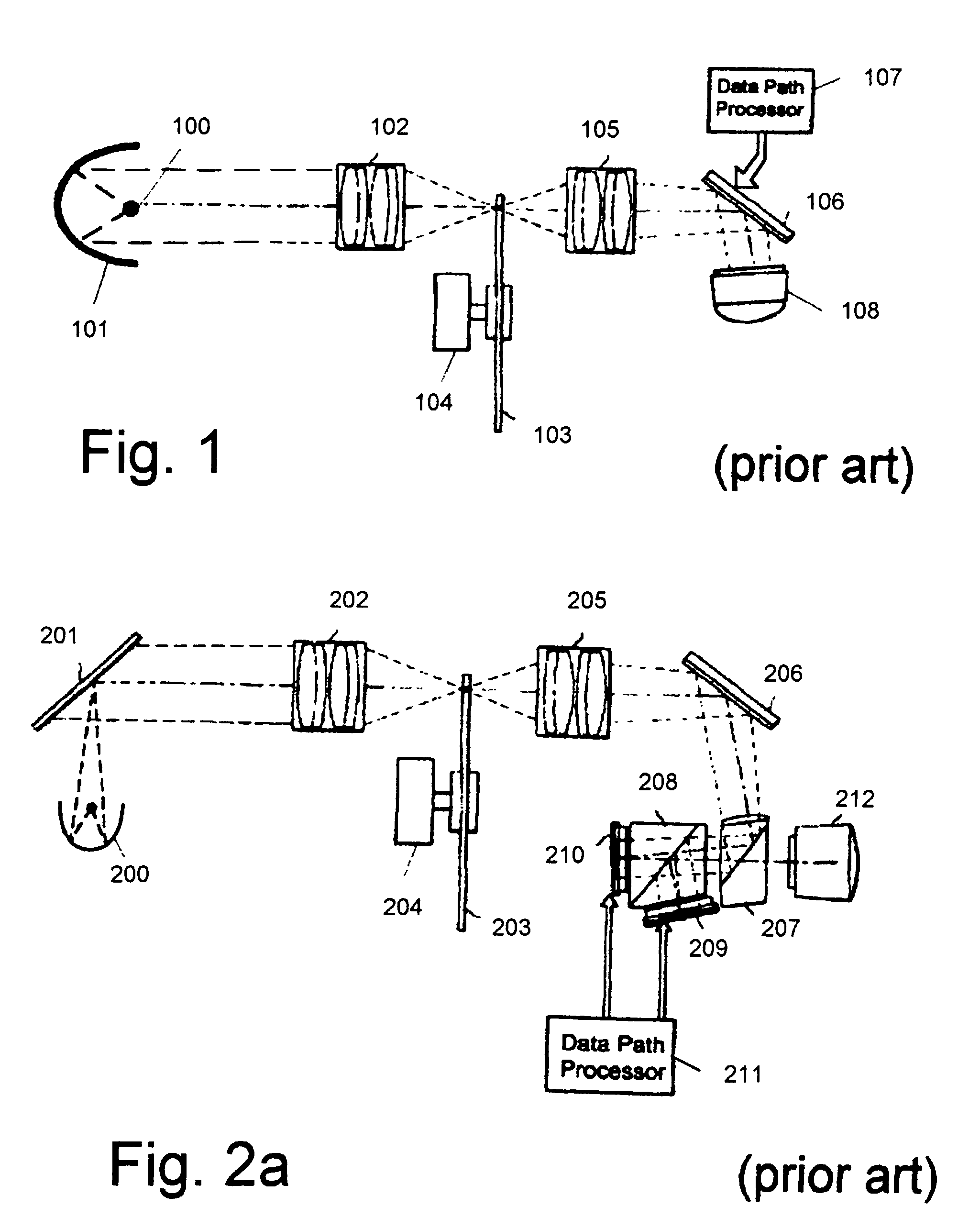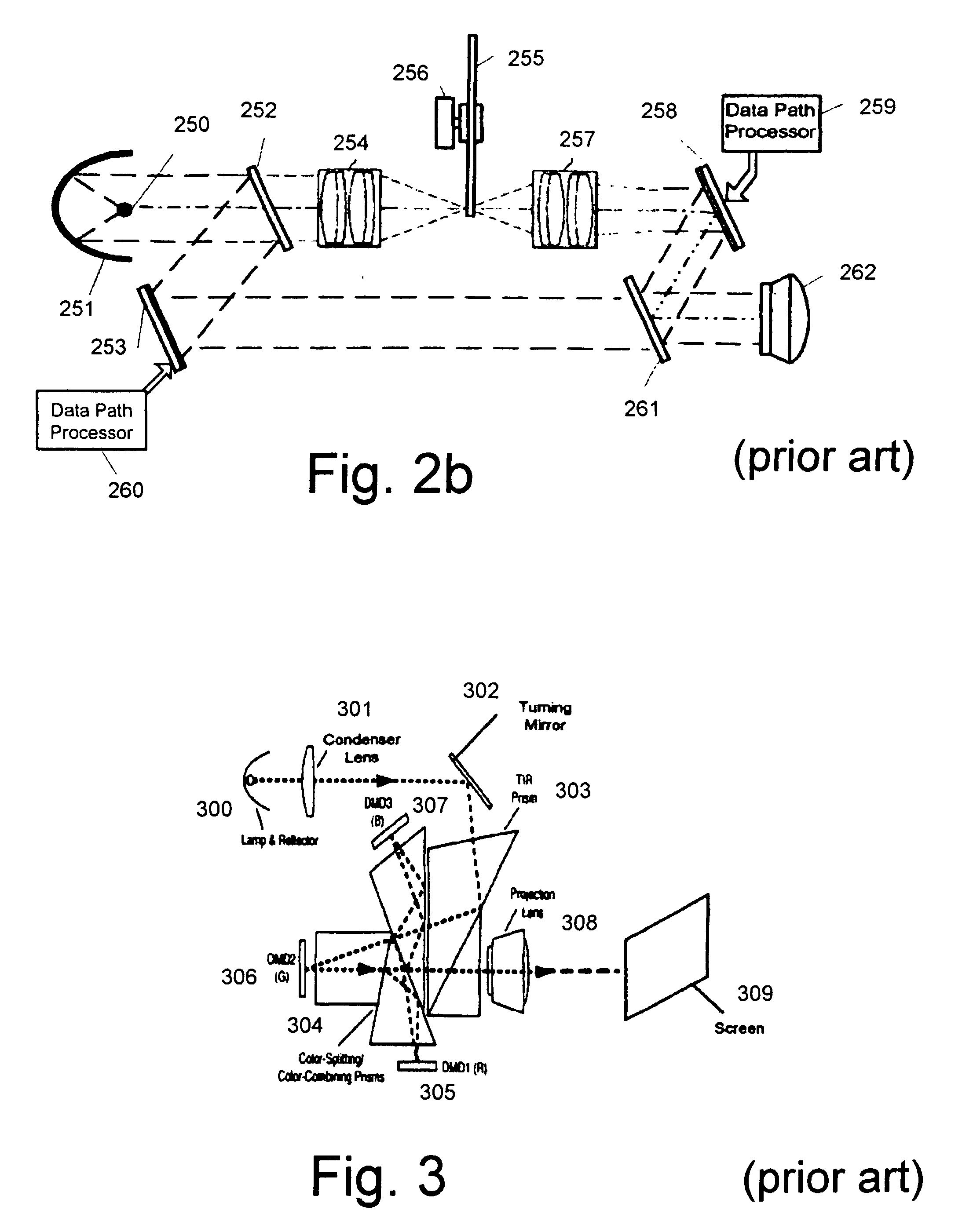SLM projection display with series DMD illuminator
- Summary
- Abstract
- Description
- Claims
- Application Information
AI Technical Summary
Benefits of technology
Problems solved by technology
Method used
Image
Examples
first embodiment
[0038] FIGS. 7a and 7b are top and front views of a schematic drawing for the present invention, which uses a single illumination DMD in series with the two parallel projection SLMs to implement an improved version of the system of FIG. 2a without a rotating color wheel and using the yellow-magenta dichroic scheme discussed in FIG. 6. White light from a lamp 701 is collected by a reflector 700 and directed on to the surface of an illumination DMD 702 in a direction perpendicular to the surface of the DMD. The micro-mirrors are sequentially switched between +x degrees and -x degrees with light reflecting from the mirrors when tilted in the +x direction 703 being reflected off a first turning mirror 704, through a red dichroic 705, on to the surface of a yellow dichroic 706. Light reflecting from the mirror when tilted in the -x direction 707 is reflected off a second turning mirror 708, through the red dichroic 705, on to the surface of a magenta dichroic 709. The red-green light ref...
second embodiment
[0042] FIG. 8 is a schematic drawing for the present invention, which also uses a single illumination DMD in series with green-blue projection SLM, but splits off the red light and send it directly to a dedicated red SLM to implement an improve version of the system of FIG. 2b without a rotating color wheel. White light from a lamp 801 is collected by reflector 800 and directed into a first TIR prism 802 where the red light is reflected off an internal surface into a second TIR prism 803. Here, the red light is again reflected off an internal surface on to the reflective surface of the red SLM 804, where it is modulated based on the red image data content and reflected from the ON pixels of the SLM back through the second TIR prism 803 into a projection lens 805. In parallel, cyan light passes through the first TIR prism 802 on to the micro-mirrors of an illumination DMD 806 along a path that is perpendicular to the surface of the DMD. The micro-mirrors of the illumination DMD 806 s...
third embodiment
[0043] FIG. 9 is a schematic drawing for the present invention, which uses two illumination DMDs in series with two projection SLMs to implement an improve performance projection display system without a rotating color wheel. In this configuration, white light from a light source (not shown) is passed through a first turning mirror 900 onto the surface of a yellow dichroic 901 from which yellow (red-green) light is reflected into a first yellow illumination DMD 902 and magenta (red-blue) light is passed through on to the surface of a second magenta illumination DMD 903. The yellow and magenta light is respectively modulated to optimally control the system performance by means of these two illumination DMDS. Modulated light from the yellow illumination DMD 902 is reflected off the ON micro-mirrors back on to the yellow dichroic 901. This light is then reflected off the yellow dichroic 901, off the reflective surface of the first turning mirror 900, off the reflective surface of a sec...
PUM
 Login to View More
Login to View More Abstract
Description
Claims
Application Information
 Login to View More
Login to View More - R&D
- Intellectual Property
- Life Sciences
- Materials
- Tech Scout
- Unparalleled Data Quality
- Higher Quality Content
- 60% Fewer Hallucinations
Browse by: Latest US Patents, China's latest patents, Technical Efficacy Thesaurus, Application Domain, Technology Topic, Popular Technical Reports.
© 2025 PatSnap. All rights reserved.Legal|Privacy policy|Modern Slavery Act Transparency Statement|Sitemap|About US| Contact US: help@patsnap.com



